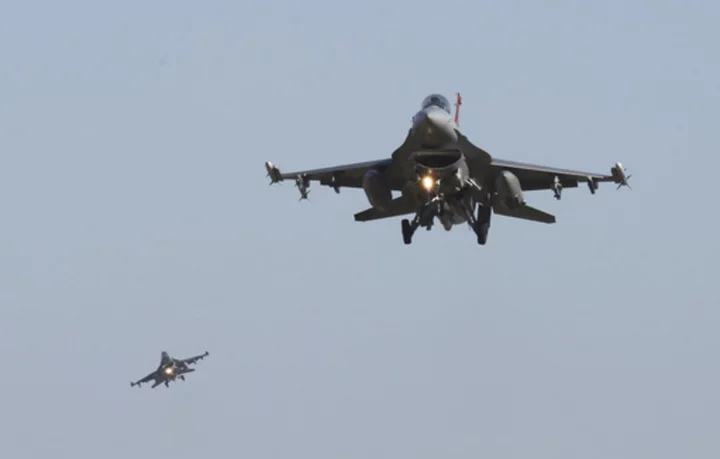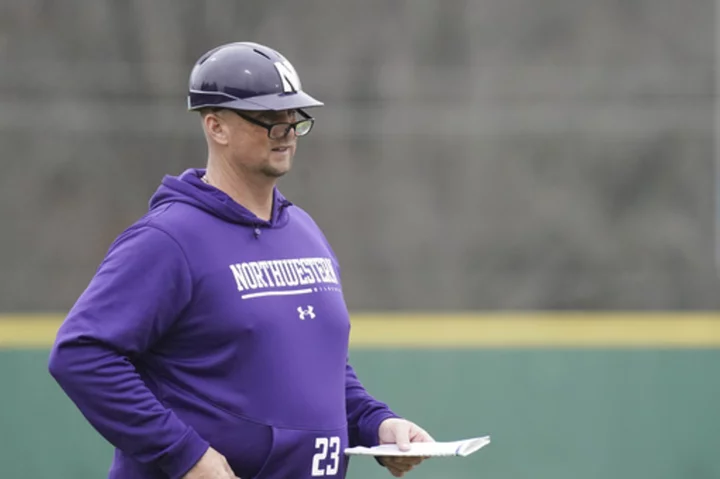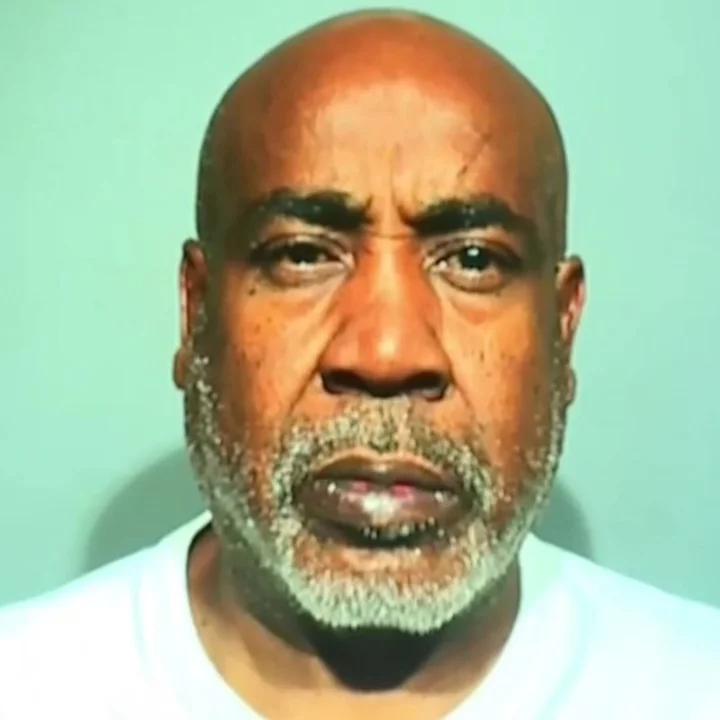NATIONAL HARBOR, Md. (AP) — The U.S. could have the first Ukrainian pilots trained on F-16 fighter jets before the end of the year, though it will be longer than that before they are flying combat missions, the director of the U.S. Air National Guard said Tuesday.
The Ukrainian pilots are expected to arrive at Morris Air National Guard Base in Tucson, Arizona, by October. Those aviators are being evaluated for English language skills right now, and depending on their proficiency and previous fighter jet experience, they could complete the U.S. training within three months, Lt. Gen. Michael Loh, director of the U.S. Air National Guard, said at the annual Air Force Association convention in National Harbor, Maryland.
“As soon as they’re given a go-ahead, they’ll be coming over and they’ll start their training immediately,” Loh said.
To meet the quick training timeframe, Tucson will likely shift some of its other international pilot training commitments to move Ukraine to the front of the line, he said.
“It’s a national priority,” Loh said.
However, after completing the U.S. training, the Ukrainians would need to return to Europe for additional NATO training. NATO allies are also training Ukrainians on how to maintain the aircraft, and that will also need to be completed before the jets would be flying combat missions. Loh did not have an estimate of how much time the additional training would take.
Gen. David Allvin, the nominee to become the next chief of the Air Force, told senators at his confirmation hearing Tuesday that, on average, the F-16 training will take six to nine months.
Ukraine’s leaders have asked for fighter jets from the West since the earliest days of the war. For the first year and a half, the U.S. and other allied partners focused on providing other weapons systems, citing the jets' cost, concerns about further provoking Russia, the number of deadly air defense systems Russia had covering Ukrainian airspace and the difficulty in maintaining the jets.
Since then the war has become a gruesome, slow-moving fight with ground tactics and trench warfare reminiscent of World War I, and for that, the F-16’s ability to suppress enemy air defenses and conduct low-altitude attacks could help Ukraine, Loh said. In addition, unlike some other systems pledged to Ukraine, the F-16 is still in production, and because it is widely used by a number of international partners, there are plenty of spare parts.
“I definitely think it can be a game changer,” Loh said.
Sen. Richard Blumenthal, D-Conn., asked Allvin if the training could be accelerated, noting that the Ukrainian forces learned how to operate other systems, such as the Stryker and Bradley fighting vehicles, faster than anticipated.
“I can assure you that if the folks in Tucson see the advancement, they will not hold them back,” Allvin, who is currently the vice chief of the Air Force, told the Senate Armed Services Committee. “They will train them to the level of their competency, and if that takes less time, then all the better.”
Ukraine is seeking up to 50 F-16 fighter jets, or the equivalent of three fighter squadrons from coalition nations; in August, Ukrainian President Volodymyr Zelenskyy said Kyiv was set to receive 42 of the jets.
Loh said the Air National Guard assessed the three-month timeline based on training Ukrainian pilots received on Fresno, California-based F-15Cs, another advanced Air National Guard fighter jet. That exposure allowed the Air National Guard to assess that Ukraine’s aviators were already using more Western tactics in flying and that it would not take long to bring them up to speed, he said.
The nine-month timeframe is the estimate to get pilots with no previous fighter jet experience flying the F-16s, Loh said.









